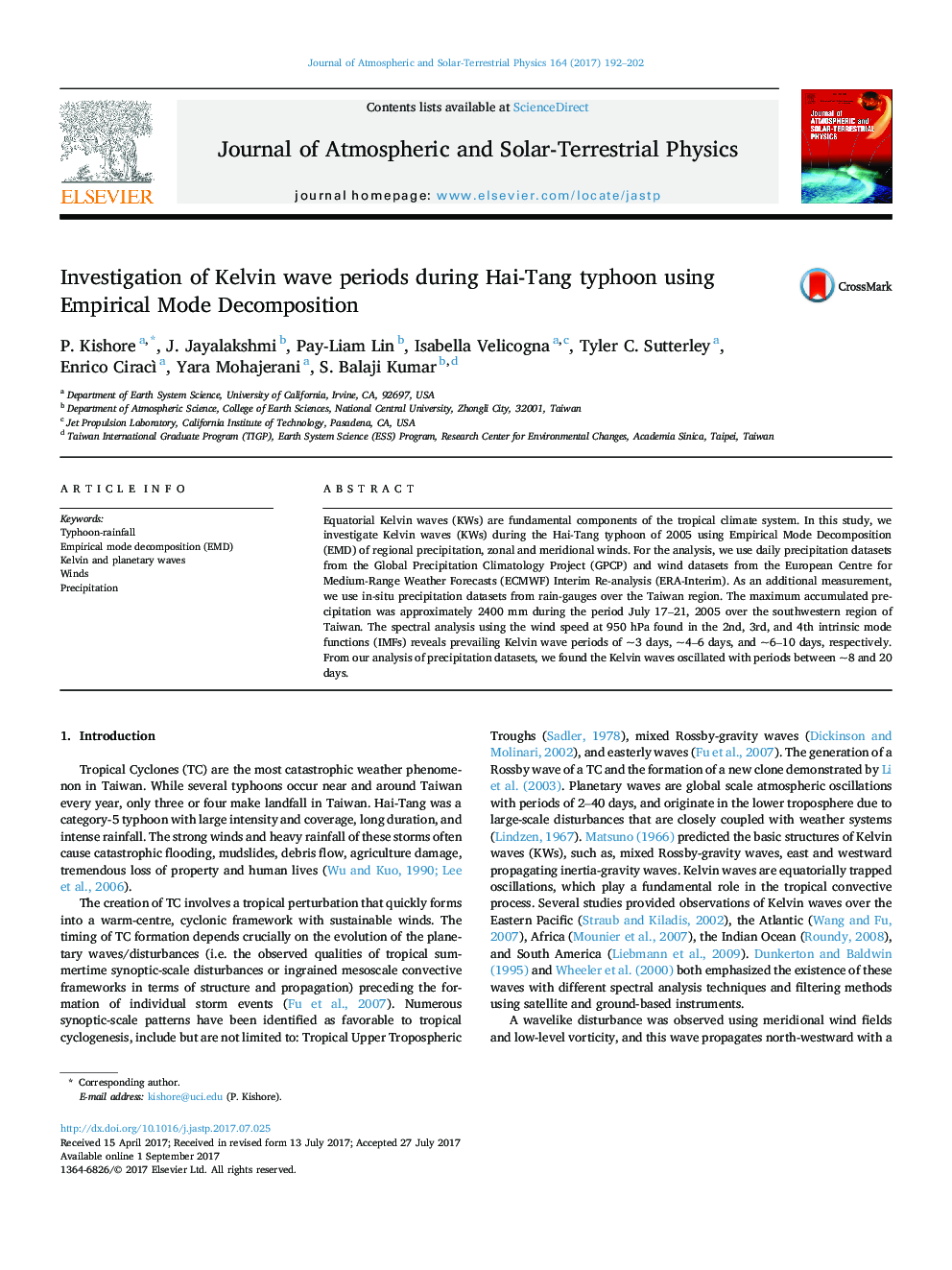| Article ID | Journal | Published Year | Pages | File Type |
|---|---|---|---|---|
| 5487472 | Journal of Atmospheric and Solar-Terrestrial Physics | 2017 | 11 Pages |
Abstract
Equatorial Kelvin waves (KWs) are fundamental components of the tropical climate system. In this study, we investigate Kelvin waves (KWs) during the Hai-Tang typhoon of 2005 using Empirical Mode Decomposition (EMD) of regional precipitation, zonal and meridional winds. For the analysis, we use daily precipitation datasets from the Global Precipitation Climatology Project (GPCP) and wind datasets from the European Centre for Medium-Range Weather Forecasts (ECMWF) Interim Re-analysis (ERA-Interim). As an additional measurement, we use in-situ precipitation datasets from rain-gauges over the Taiwan region. The maximum accumulated precipitation was approximately 2400Â mm during the period July 17-21, 2005 over the southwestern region of Taiwan. The spectral analysis using the wind speed at 950Â hPa found in the 2nd, 3rd, and 4th intrinsic mode functions (IMFs) reveals prevailing Kelvin wave periods of â¼3 days, â¼4-6 days, and â¼6-10 days, respectively. From our analysis of precipitation datasets, we found the Kelvin waves oscillated with periods between â¼8 and 20 days.
Related Topics
Physical Sciences and Engineering
Earth and Planetary Sciences
Geophysics
Authors
P. Kishore, J. Jayalakshmi, Pay-Liam Lin, Isabella Velicogna, Tyler C. Sutterley, Enrico Ciracì, Yara Mohajerani, S. Balaji Kumar,
